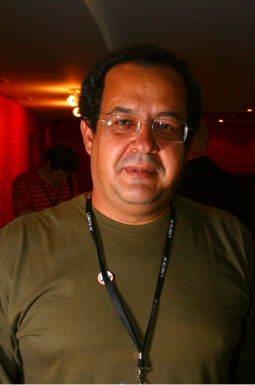Using wood, sugar, cement, or a camera on, with no particular aim, Caetano Dias works to “give the creator’s creation back to man.” Sweetness, literal and symbolic, is what guides him in retrieving—amidst the poverty of peripheral neighborhoods or the disillusion of a random meeting—the poetry of being human, man’s inherent ability of transforming his reality by force of the spirit, reconnecting himself to the other and to the divine.
The body is at the core of his research. Skin and sex are at once sacred and profane, pillars of the temple inhabited by joy, pleasure, and pain; a sublime wholeness that serves as an instrument for expressing intimate longings and the materialization of inner life. “The ideal of a forbidden body presented by religion clashed against my own bodily experience, which was playful and replete with immersions in nature,” says the artist.
His sculptures, interventions, installations, and videos show a trend of seeking the other; or, as put by curator Daniela Bousso, the author of the Essay in this Dossier, of “building procurements, possible relations between distinct units, alliances between different partners.” “In my work, I am always seeking something that is not only poetic, but also has the possibility of touching, causing enchantment, and problematizing,” says Dias.
A designer and professor, he earned the 2007 Le Fresnoy Audiovisual Creation Award for his Canto doce pequeno labirinto, as part of the Videobrasil Residency Programme. In 2009, he spends study and creation sojourns in France and Spain. His “poetical madnesses for living,” as he describes his works, further multiply themselves in seven new video, video installation, and video dance projects. They will be on display in exhibitions to be held in Salvador, São Paulo, and Fortaleza this year and in 2010.
Further info on this artist available at the collection
